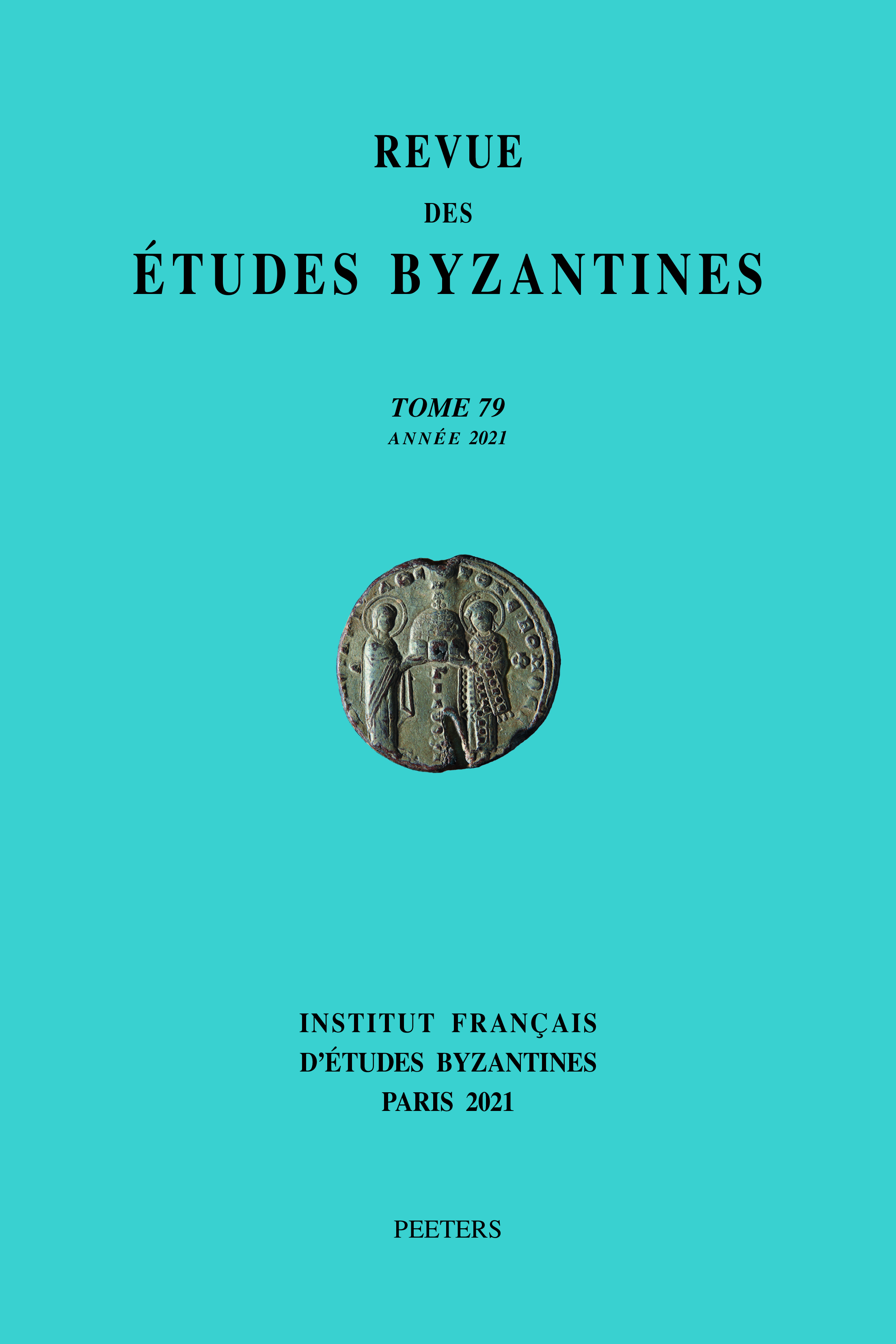next article in this issue  |

Preview first page |
Document Details : Title: The Radenos Family Subtitle: A Prosopographic Study through Literary and Sigillographic Evidence Author(s): CAMPAGNOLO-POTHITOU, Maria , CHARALAMPAKIS, Pantelis Journal: Revue des Études Byzantines Volume: 77 Date: 2019 Pages: 5-106 DOI: 10.2143/REB.77.0.3287308 Abstract : This is the first thorough prosopographic study on the Radenoi, a renowned and prolific lineage that occupied a long-lasting prominent position in Byzantine society from the early 10th until the 15th century, which has thus far evaded scholarly attention. Literary and sigillographic evidence (published and unpublished) shows the Radenoi serving in high offices of the imperial and ecclesiastic administration, e.g., commander of the fleet, chief of the imperial treasure or metropolitan. They were also distinguished founders or proprietors of prestigious religious establishments, noblemen, businessmen, and landowners, while several Radenai ladies left a legacy of seals or portraits which are a testament of their distinguished position among the upper class of Byzantine aristocracy. Being allies or close friends of other illustrious families, they overcame the political crisis of the mid-11th century and managed to maintain their social status after the Komnenian reform. In the fatal beginning of the 13th century, one of the Radenoi was even about to become emperor. Pour la première fois, une étude prosopographique approfondie est consacrée à la famille byzantine des Radènoi. Celle-ci fait son entrée dans l’histoire dès le début du 10e siècle avec Iôannès, commandant de la flotte impériale. Lignée brillante et prolifique, les Radènoi ne vont cesser d’occuper une place prépondérante au sein de la société byzantine, jusqu’au 15e siècle. Les sources littéraires et sigillographiques – en partie nouvellement explorées ici – les situent à de hauts postes de l’administration impériale et ecclésiastique – deux d’entre eux étaient des métropolites – mais les présentent aussi comme des propriétaires terriens, des fondateurs d’établissements religieux, des commerçants, des ambassadeurs. Plusieurs Radènai ont aussi laissé leur sceau ou leur portrait, qui témoignent de leur position distinguée au sein de la haute aristocratie. Alliés ou proches d’autres familles nobles, les Radènoi ont pu maintenir leur statut social même après la crise politique du milieu du 11e siècle et les réformes des Comnènes. À l’aube fatale du 13e siècle, un Radènos fut même pressenti pour le trône impérial. |
|


